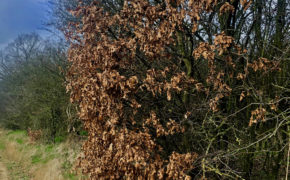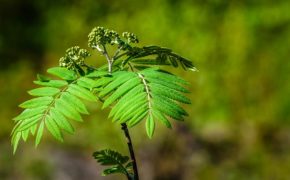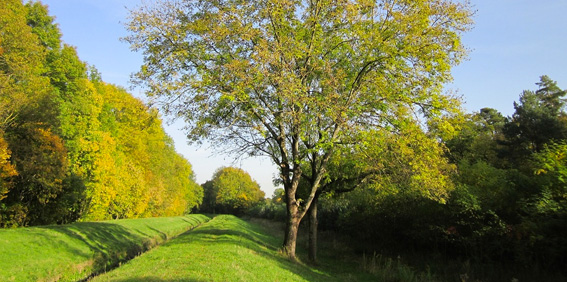
Get a quick no obligation quote It’s free and will only take a jiffy!
The Benefits of Planting Trees (and a guide to planting them)
Thousands of species of wildlife depend on trees for food and shelter. Trees are a major player in the fight for climate change. Birds, bees, butterflies and moths as well as a host of other insects, mammals, reptiles and even fish all rely on trees.
Whether you have a personal goal of attracting birds or insects into your garden, you want to create shade, privacy or colour or all of the above, or you are focused more on worldwide benefits, whatever your reasoning behind planting trees, there really are so many advantages in doing so.
Why plant trees?
The Woodland Trust has planted over 47 million trees since it was founded in 1972. From single trees in gardens to hedges and entire woodlands, the UK is benefiting from its amazing work. But it needs more help, and that’s something we can all get involved in.
There are numerous good reasons why we should all pledge to plant a tree in our gardens, or push for our local councils to plant more trees in our streets and public spaces. Let’s take a look.
Trees help fight climate change
The most straightforward climate change solution is tree planting. Trees are the best carbon capture and storage machines. Through photosynthesis, they absorb atmospheric carbon and lock it up for literally hundreds of years. Every part of the ecosystem that surrounds a tree is involved in carbon reduction, including the wood both living and dead; roots; leaves; surrounding soils and vegetation.
Trees do a lot more than capture carbon. They also help combat climate change by preventing flooding; reducing pollution; bringing down city temperatures and enriching soil with nutrients.
Trees encourage wildlife
Trees provide homes for a huge number of species. Woodlands are home to more wildlife than any other landscape, but we can all help to provide homes for wildlife just by planting a single tree in our gardens or local environment.
Mammals such as badgers, bats, foxes, squirrels, hedgehogs and dormice all benefit from the stable habitat and food supplies provided by trees. Birds enjoy the protective cover of the tree’s canopies and make use of the leaf litter to build nests. Butterflies rely on trees for food, shelter and water as well as breeding spots. Bees and wasps are important pollinators and rely on trees as a source of pollen and nectar, especially in the early spring.
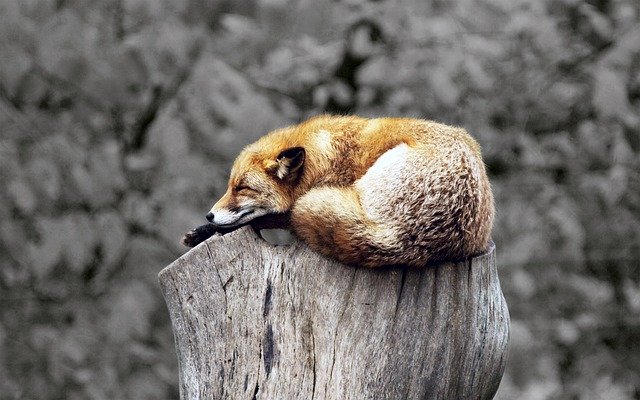
Trees create shade and shelter
There is nothing better than taking refuge under the shade of a tree when the sun is beaming overhead. Animals find shelter under trees too come rain or shine, and plants and soils benefit equally from the shade.
Trees help prevent flooding and erosion
Trees help reduce erosion by binding soil particles together and slowing wind and water flow. Trees’ roots suck water deep from under the ground, right down to 200 feet. Land is protected as the rainwater is held in the ground rather than being dried by the sun.
What trees to plant?
It is crucial that the right trees are planted in the right places.
UK native trees should always be your first choice because they are more resilient against pests, diseases and climate change. They also promote biodiversity, as native trees support a greater range of native species.
We are as a nation facing a biodiversity crisis with far too many habitats lost. Planting UK-grown trees helps create and grow wildlife havens by providing food and shelter, which in turn boosts biodiversity.
Alder trees produce spring catkins that provide an early source of nectar and pollen for bees. Alder seeds are eaten by birds including the siskin, redpoll and goldfinch.
Silver birch is a highly attractive tree to grace any garden. The yellow autumn leaves bring breath-taking colour, and the abundance of seeds and insects hosted by this tree are a major pull for smaller birds like siskin, long-tailed tits and greenfinches.
Blackthorn blooms very early in the spring, providing a striking abundance of pretty white flowers and a valuable source of pollen and nectar for bees. Caterpillars of a variety of moths enjoy the tree’s foliage which appears following the blossom, and birds find refuge amongst the thorny branches.
Crab apple flowers are an excellent early source of pollen and nectar for insects, especially bees, and birds such as the song thrush, fieldfare, blackbird and redwing enjoy its fruits, as do badgers, voles and mice.
Dog rose flowers in May and June and provides an important source of nectar for insects. Its hip fruits are enjoyed by blackbirds, redwings and waxwings.
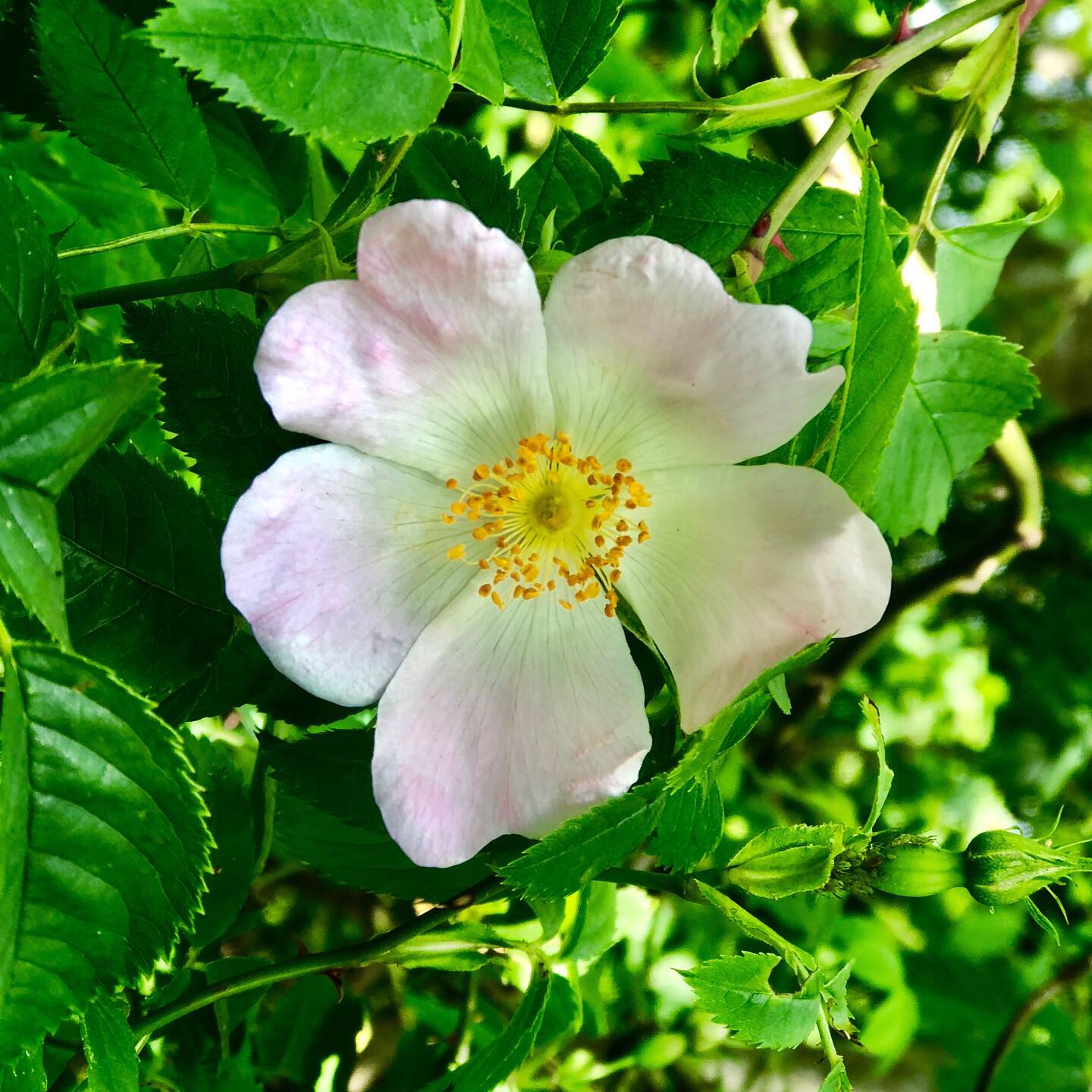
Image copyright Sarah McInerney.
Hawthorn is one of the most abundant trees where wildlife is concerned, perfect for a wildlife garden. Planted as a hedge or single tree, its glorious pink-white blossom blooms in May, followed by ruby-red berries in the autumn. Wildlife absolutely adores hawthorn. Dormice are partial to its flowers, whilst bees and other pollinators love the nectar and pollen. Hawberries are rich in antioxidants and are eaten by all sorts of migrating birds.
Holly is a pretty bush or tree that feed many birds such as the mistle thrush and also provides much needed shelter from winter storms and predators. It is also a main food source for the holly blue butterfly caterpillar. Hedgehogs, toads and small mammals use the dried leaf litter for hibernation.
Rowan is another wildlife magnet. Its bright orange-red berries are rich in vitamin C and much enjoyed by blackbirds, thrushes, redstart and redwing, whilst the blossom is a rich source of nectar for bees and other pollinators.
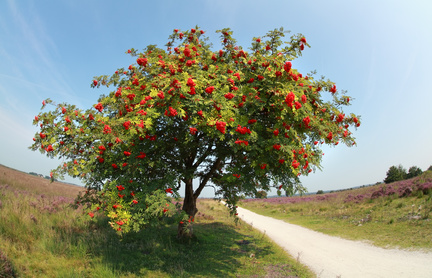
If you are looking to attract butterflies into your garden, you will do well to plant oak or willow trees.
The Woodland Trust has published an excellent guide to the best British trees to plant in your garden.
How to plant trees
Planting trees is quite straightforward, but you do need to make sure you follow the rules on health, weather, soil conditions and aftercare if your tree is going to benefit from the best possible start. The Royal Horticultural Society’s guide to planting new trees is an excellent resource, as is the Woodland Trust’s how to plant trees guide.
Trees are best planted between October and April. Avoid waterlogged sites or frozen soil though. If you are planting in a container you can do so any time of year, but it is easier to care for them if you go for autumn or winter as they won’t need as much watering.
Formative pruning of new trees
It is important that young trees are correctly pruned so that they develop a strong branch structure, especially if they are fruit–bearing.
Removing or at least shortening competing leaders and getting rid of dead, damaged or diseased wood is good practice. Side shoots also need removing periodically if you want to promote a clear, strong, single trunk. The RHS guide to formative pruning of new trees is particularly useful, but you should always call in professional help from a qualified tree surgeon if you are in any way uncertain of the correct procedure to adopt for your particular tree species.
How to care for your trees as they grow
The importance of professionally caring for your trees cannot be over-emphasised. Regular pruning, checking for disease and pest infestation and dead wooding are all essential if your tree is going to enjoy the best of health.
Need professional assistance in caring for your trees? Whether you’ve recently planted a tree, or you have a mature specimen in your garden that could do with some care and attention, our helpful experts here at TH Trees Ltd are ready to help. For personalised assistance, you are welcome to get in touch.
Had a fallen tree in the early hours of Monday morning, called for quote and the team had it cleared on the same day. Really good communication when the lads were onsite and did a great job. Lots of pride in their work shown with the thorough clear up. Would thoroughly recommend.
Thank you Stuart for your kind review. We were glad to be able to help you with your fallen tree. If there's anything else you need in the future, please don't hesitate to get in touch.

